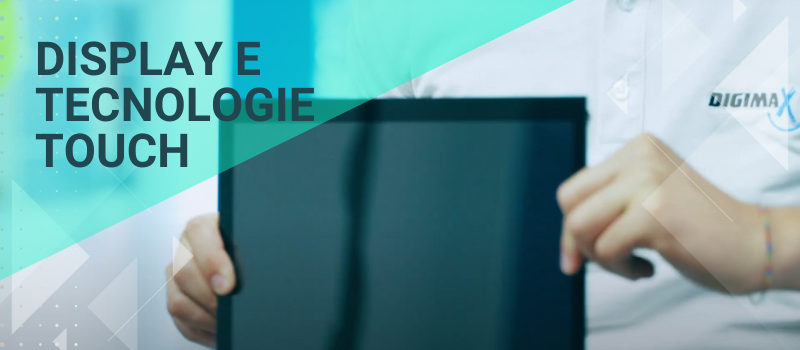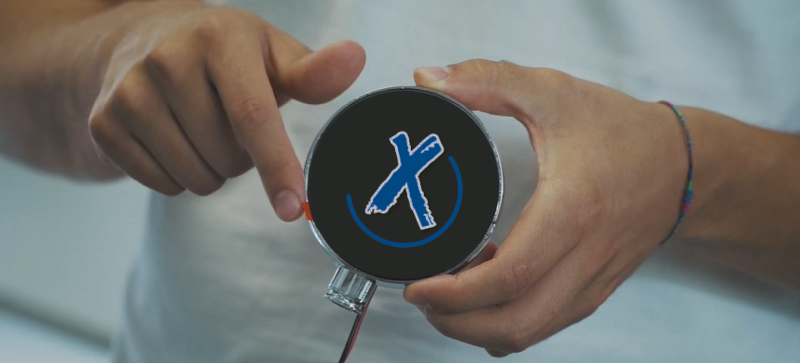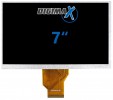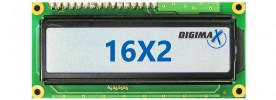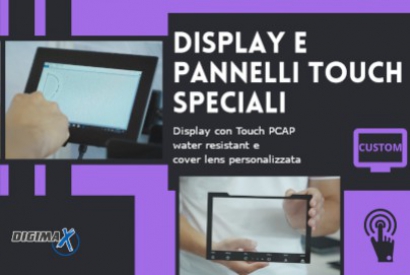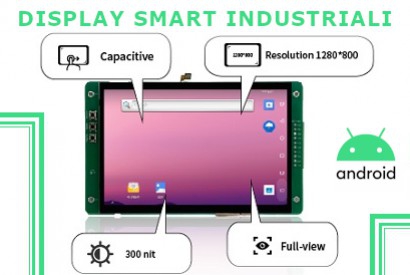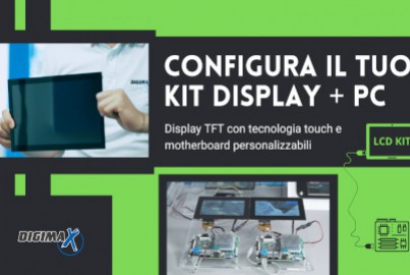Touch display with capacitive, resistive and hover touch technology
Published : 03/14/2023 11:00:00
Industrial automation, consumer electronics, public services, medical equipment, and large-scale retail trade: the touch screen display is an increasingly widespread electronic device at both business and consumer levels capable of guaranteeing intuitive interaction with computer systems.
Touchscreens can be divided into two main types:
- Resistive displays, consisting of conductive and insulating materials;
- Capacitive screens, based on electrostatic conductivity.
But that's not all: technological innovations in professional displays are leading to the spread of "contactless" touch screens, with hover effect via infrared sensors. Discover in this article the characteristics, differences and applications of resistive and capacitive touchscreens and the latest news in the field of industrial touch screens.
How a resistive display works
The resistive screen uses a relatively simple technology: the panel is made up of two layers of conductive material with a given electrical resistance (hence the term "resistive"), coated with a thin layer of epoxy resin insulator.
When a user presses on the resistive display, the two surfaces come into contact and generate an electrical signal (called "voltage divider") which is then processed by the electronic board. Since it is a mechanical movement, it is possible to use any instrument capable of putting pressure on the screen, from gloved hands to the stylus. In numerous applications, the resistive touchscreen has been replaced by the capacitive one, which is more resistant and sensitive to the touch: however, resistive displays are still widely used in industry due to their reduced cost, low consumption and the easy operation.
How a capacitive screen works
The capacitive touch screen is instead based on the technology of electrostatic conduction, more sophisticated than the resistive display and allows you to interact through one or more tactile inputs (in this case “multi touch”). The capacitive screen is composed of a thin layer of metal oxide, which covers the glass display and can activate capacitors.
When a user presses on the capacitive touch screen, a small part of the electrostatic charge is transferred to the surface of the display and the signal is then processed by the electronic board. The mechanism is related to the dielectric capacity of materials, so the inputs can only be perceived by conductive materials, including human fingers. The capacitive touch screen is widely used in consumer devices, retail and large-scale distribution thanks to greater visibility and sensitivity, resistance to wear and ease of cleaning .
The differences between touch screens and what's new in the world of displays
The main differences between a capacitive and a resistive touch screen are:
- Technology: the resistive screen is based on electrical resistance technology, while the capacitive display is based on dielectric capacitance technology;
- Touch: the resistive display can react to any kind of touch input, while the capacitive one cannot. Capacitive displays offer multi-touch support, while most resistive displays do not support multi-touch input;
- Accuracy and sensitivity: the capacitive screen is known for its precision, which allows for finer control of the signal. The resistive screen isn't quite as accurate, but offers a good tactile experience and still reliable response;
- Duration and temperature: the resistive screen wears out faster than the capacitive display, especially with intensive use. However, the resistive touchscreen can work between -15° C and +55° C in both dry and humid environments, while the capacitive only between 0° C and +35° C;
- Price: the resistive screen is generally much more cheaper than the capacitive screen, also in terms of repair costs or replacement of materials.
Among the most recent innovations in the display field we find the "hover touch" technology: a contactless system that allows users to interact without touch the screen. Through infrared sensors which detect when an object is placed near the screen, the signal reaches the electronic card which interprets the movement.
The development of hover touch technology has undergone a major growth as a result of the Covid-19 pandemic, in order to avoid bacterial transmission on surfaces: a hover touchscreen combines the sensitivity of the capacitive display with the versatility of the resistive screen in the medical, retail and public service sectors.
Digimax solutions for professional touchscreens
Digimax offers a wide range of innovative professional displays of superior quality, offering configurable solutions to all major industrial applications. Accurate, reliable and versatile for a wide range of industries, our resistive and capacitive touch screen displays are designed to specifically meet all business needs.
From the best OLED touch screen displays for the industry to touch screens with Android system, from touchscreens resistant to water and outdoor environments to displays with antibacterial treatment for the medical sector: discover the range of Digimax products and contact us to receive a personalized advice on industrial touchscreens.
-
Custom displays and special touch panels for industrial applications
Leggi tutto
Published : 11/26/2020 15:15:00 -
Industrial touchscreen smart display with Android operating system
Leggi tutto
Published : 04/13/2021 15:00:00 -
Customisable TFT display kit and PC motherboard for industrial applications
Leggi tutto
Published : 11/12/2020 15:15:00

